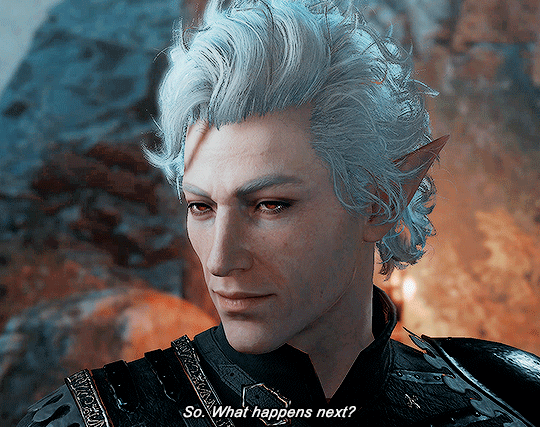Confronting Ghosts of the Past: Fenris & Astarion
Spoiler warning for Baldur’s Gate 3 and Dragon Age 2!
If you’re still playing through Astarion and Fenris’ arcs, it’s best to return later.
There’s something undeniably compelling about elves in fantasy that intrigues us from the start. These beings who often appear timeless, graceful, and otherworldly, yet carry centuries of pain beneath the surface. My own fascination began, as it did for many, with Legolas from The Lord of the Rings. Orlando Bloom’s portrayal drew me in immediately with his ethereal and loyal character.
This fascination with elves naturally carried over to my gaming interests. Over time, the archetype of the elf seemed to evolve into something more complex and relatable. The flawless facade cracked to reveal trauma, rage, and longing beneath. Enter Dragon Age 2’s Fenris and Baldur’s Gate 3’s Astarion. Now here are two elves whose stories linger long after the screen fades to black.
Confession time: I did the unthinkable when I first started the Dragon Age series — I began with Inquisition. I’d heard Origins was excellent but “dated,” and Dragon Age 2 supposedly lacked depth. (A claim I now know couldn’t be further from the truth, but that’s a post for another day.) When I finally played Dragon Age 2, I was immediately captivated by its diverse cast and especially by one brooding elf with a deep distrust of all things magical.
For my apostate mage Hawke, that tension was… complicated.
Fenris is compelling from the start. A strong, formidable warrior with a dry sense of humor. The beauty of Dragon Age 2 is that the story spans several years, so players can develop relationships with their party members over time and learn more as the game progresses. The story’s passage of years lets you peel back Fenris’ layers slowly, piece by piece. You learn he is a former slave from Tevinter, branded and bound by lyrium markings that grant him power even as they symbolize his trauma. He escaped his master, Danarius, but carries the scars, both physical and emotional, wherever he goes.
His anger, his coldness toward mages, and his moments of self-loathing all feel earned. Fenris’ story becomes a meditation on what it means to survive when your very body is a reminder of your suffering.
Then there’s Astarion, the elf who has bewitched a new generation of players in Baldur’s Gate 3. Vain, flirtatious, and unapologetically self-serving, Astarion seems at first to be little more than a charming narcissist. He relishes danger and decadence in equal measure, and I’ll admit that the “Astarion disapproves” popup appeared far too often in my first playthrough. Let’s just say he was not onboard with my Tav’s “goody two-shoes” approach to problem-solving.
But Baldur’s Gate 3 excels in letting revelations unfold organically. Depending on your choices and your bond with him, you uncover the layers beneath the smirk and learn about the centuries of torment he suffered under his vampire master, Cazador. Astarion’s defiance masks deep fear. His charm is armor. His hunger for freedom is as much about control as it is survival.
Like Fenris, he has been robbed of choice. Every act was dictated, and every part of himself was shaped by cruelty, stripping him of his sense of self.
What makes both stories unforgettable isn’t just their tragedy, but the way you, the player, become part of their healing, or their undoing. Each game allows you to build different relationships with Fenris and Astarion, with Baldur’s Gate 3s approval rating and Dragon Age 2’s rivalry and friendship tiers. How you interact with side characters and quests can directly impact how Fenris and Astarion interact with you as a player. Do you earn their trust, their respect, or perhaps even their hearts?
In Dragon Age 2, Fenris’ path changes based on how you react to his quests and engage with the mage conflict in Kirkwall, with some choices even resulting in him leaving your party. Likewise, in Baldur’s Gate 3, Astarion’s approval system allows you to witness entirely different sides of him, determining whether he leans toward vengeance, redemption, or vulnerability.
Perhaps most importantly, the relationships you develop with Fenris and Astarion can culminate in their climatic story arc, where both characters must confront the ghosts of their pasts, both literal and metaphorical. Fenris faces Danarius . Astarion confronts Cazador. It’s up to the players to help the characters through these interactions, leading to important reflections of what is the healthiest way to confront trauma.
Do they seek revenge, power, or try to heal?
These moments resonate because they mirror real choices survivors face when confronting trauma: the tension between justice and healing, between rage and release. There’s no single “right” path only the one that feels most true to who they’ve become, and who you have helped them become. (Though in Fenris’ case, there is definitely a wrong path. Don’t you dare return him to Danarius.)
Overall, these stories feel especially poignant. They remind us that healing often happens in the quiet moments of reckoning, when we face what has haunted us and decide, finally, what to do with it.
🎮 Video games and stories give us safe spaces to explore themes of trauma, control, and emotional abuse, but sometimes those emotions reach beyond the screen. If you’ve ever found yourself relating to these themes, please know that you’re not alone. Help is available. Consider reaching out to a licensed mental health professional or organizations such as:
National Alliance on Mental Illness (NAMI) – resources and support networks
In the U.S., if you are in crisis, you can call or text 988 to reach the Suicide and Crisis Lifeline for free, 24/7, confidential support.
All in-game images, footage, and characters are the property of their respective developers and publishers. Screenshots and clips from Baldur’s Gate 3 © Larian Studios and Dragon Age: The Veilguard © BioWare/Electronic Arts, used under fair use for commentary and critique.



